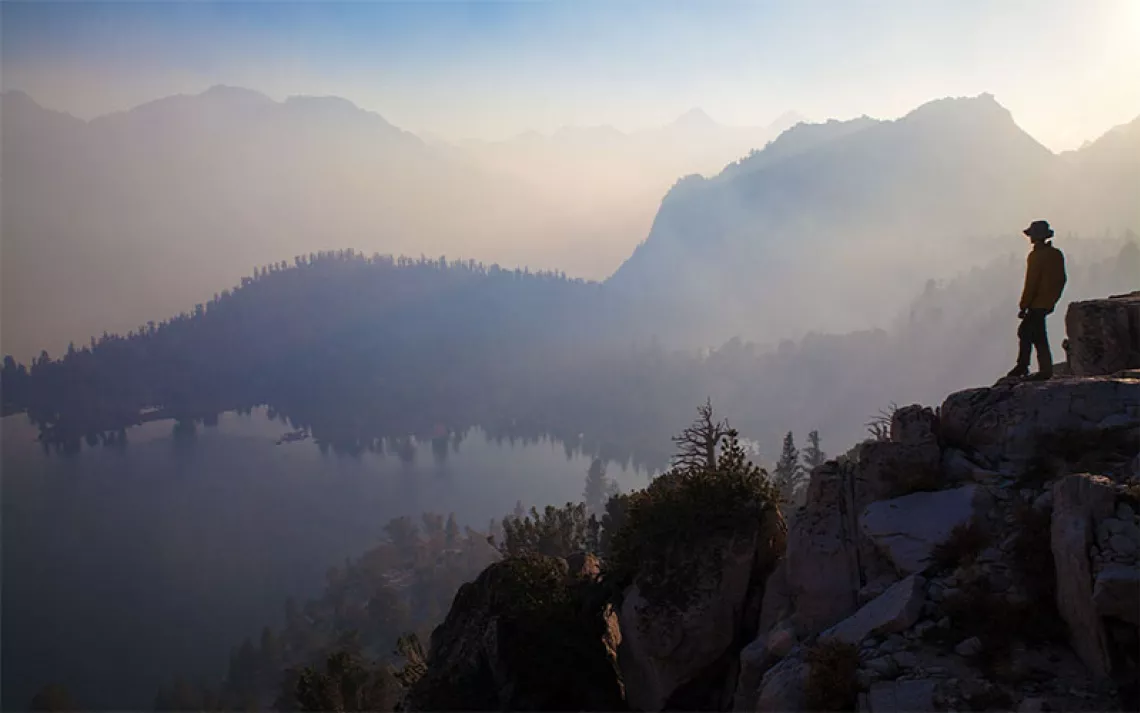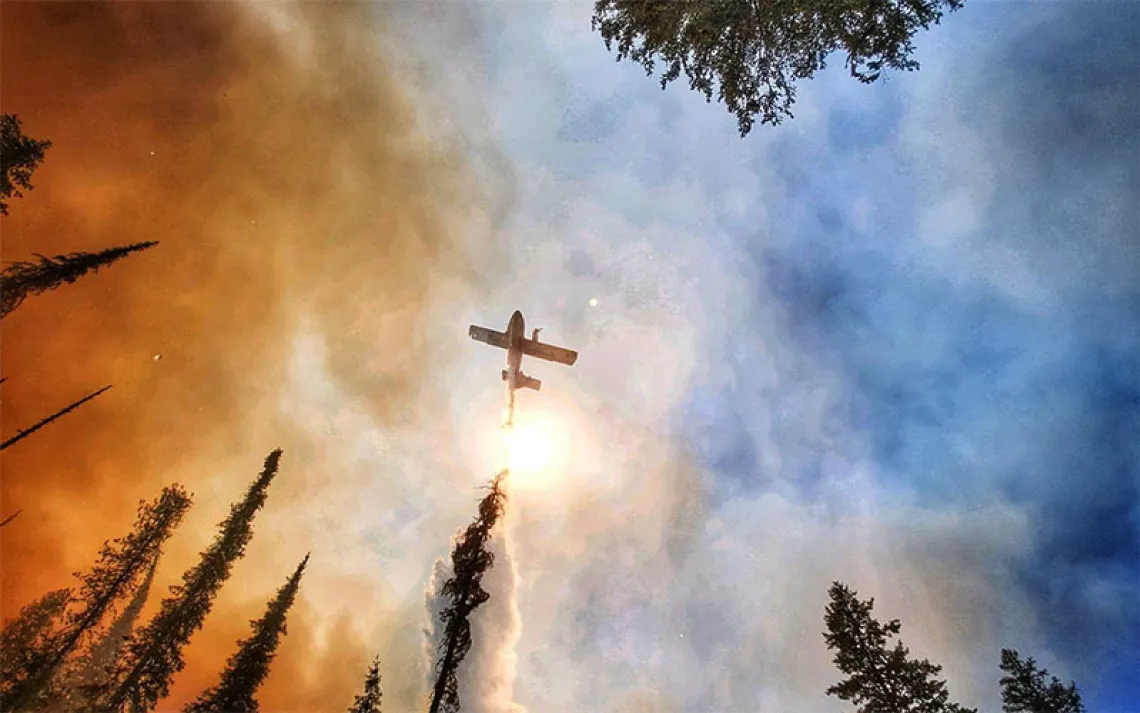A Monumental Fight Is Brewing Over America’s Public Lands
Grassroots groups prepare counteroffensive to Trump and Zinke

Photo by mountaintrails/iStock
It was April 26, and the president was signing an executive order directing Interior Secretary Ryan Zinke to spend the next 120 days evaluating more than two dozen national monuments and deciding which of them should be shrunk, or repealed entirely. “It’s time we ended this abusive practice,” Trump said, referring the Antiquities Act, the Teddy Roosevelt–era law that gives the president the power to protect public lands. “I am signing a new executive order to end another egregious abuse of federal power, and to give that power back to the states and to the people, where it belongs.”
Giving power back to the people—it sounds great. Except that it’s a smoke screen. Many of the national monuments that are in the administration’s cross hairs—places like Bears Ears National Monument in Utah and Katahdin Woods and Waters National Monument in Maine—were established only after considerable public input. In each case, there were local detractors but also broad local public support.
Perhaps Zinke will realize the extent of this support when he begins barnstorming across Utah this week, kicking off the process of deciding whether—or which—national monuments to rescind or reduce in size. "I'm going to ride a horse, like Teddy Roosevelt, and see the land and talk to the Navajo and the nations of tribes," Zinke said last week at a conference in Houston.
Yet the Native American nations who spearheaded the effort to create the Bears Ears monument in southern Utah say they can’t get a meeting with the secretary. “He needs to come down and talk to us. We need to talk to him,” says Jonah Yellowman, a Navajo who is the spiritual advisor to and board member of Diné Bikéyah, the pan-tribal organization that campaigned for years on behalf of the monument. For Yellowman, the silence from Zinke’s office is a reminder of a long history of the federal government ignoring Native American nations. “After all we did to protect our lifestyle and our culture and our stories, to have them turn away and try to undo it [the monument], makes you wonder how we are being treated. People need to have more respect. It makes you think back to when native people were being pushed around. It makes you feel like you don’t exist.”
Even as native nations receive a deafening silence from the secretary, Zinke will (according to Kierán Suckling, the executive director of the Center for Biological Diversity) be taking time to meet with folks like Phil Lyman, a San Juan County commissioner who has been a vocal opponent of Bears Ears National Monument and is also a longtime ally of the Cliven Bundy clan. Lyman was among those who were charged with breaking federal law by riding off-road vehicles through a spot called Recapture Canyon, which is held sacred by area tribes. “If you think about all the people you could meet with, why Lyman? It just looks like Zinke is trying to send the most aggressive signal he could,” says Suckling. “He’s seeking out the most extreme, right-wing people possible.”
Meanwhile, Zinke’s department is holding the public at arm's length. The Bureau of Land Management says it is postponing all “Resource Advisory Councils”—citizen-appointed groups that allow local stakeholders a chance to inform land-management decisions—through September. The postponement of the meetings exactly overlaps with the 120-day window of the monument evaluations. “At the very time they’re discussing major land-management changes—eliminating monuments and increasing the pace of development—they’re also choosing to shut out stakeholders,” Greg Zimmerman of the Center for Western Priorities told the Denver Post.
Conservation groups are determined to make their views heard anyway. As environmental attorneys hone their arguments should the president attempt an unprecedented—and legally untested—executive repeal of existing monuments, conservationists are also preparing to bird-dog legislators and make any monument assault politically radioactive. The Sierra Club is preparing for a national day of action on June 8—the anniversary of the Antiquities Act—to defend the national monuments.
On Friday afternoon, the Interior Department announced it will be seeking public comments on the monuments under review. Beginning May 12, citizens will be able to go to regulations.gov and, after entering the code DOI-2017-0002, will be able to comment on the national monuments. The Sierra Club and others plan to flood the comment period with statements in support of national monuments.
As for Trump’s statement about giving power to the people—that’s exactly what conservationists say their strategy is for fighting back. They’re confident that the public overwhelmingly favors national monuments. In the West, for example, there is strong bipartisan support for public-lands protection. The Center for Biological Diversity is working with veterans of Senator Bernie Sanders’s presidential campaign to create a network of some 500 local groups that will make sure that the attack on national monuments is mentioned any time a member of Congress holds a public event.
“It seems like really bad politics, even from a Republican perspective,” says Suckling. “Trump here looks like he’s going down a road of stirring up a really, really painful hornets nest for no good reason. This could be a massive sinkhole for the administration. They may wish they had never taken this on.”
 The Magazine of The Sierra Club
The Magazine of The Sierra Club



